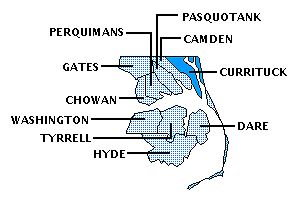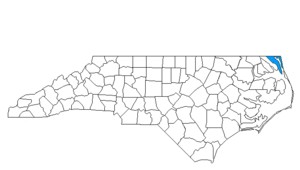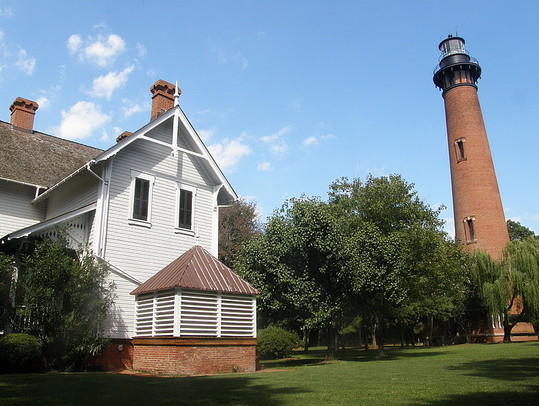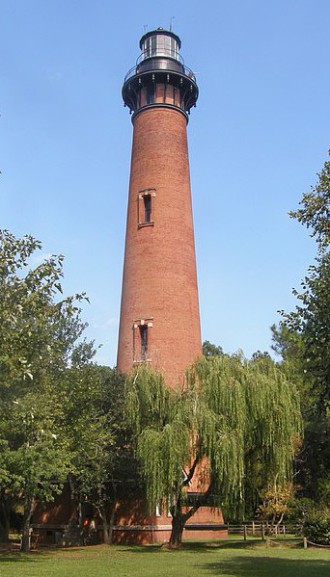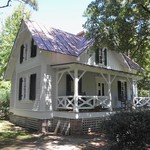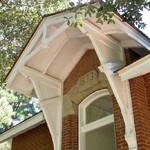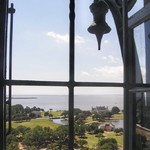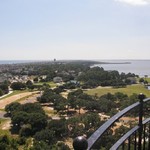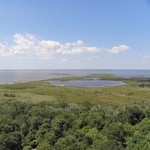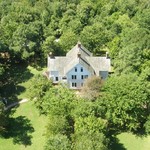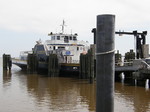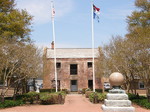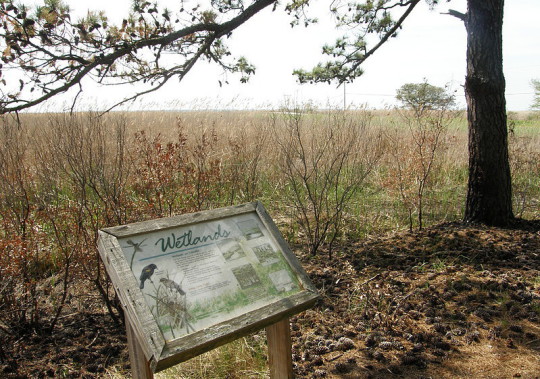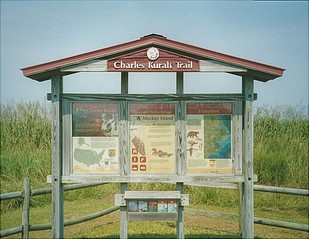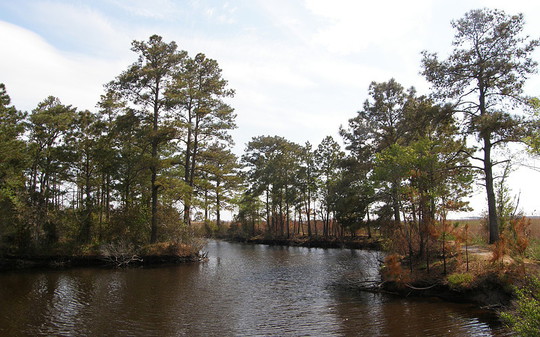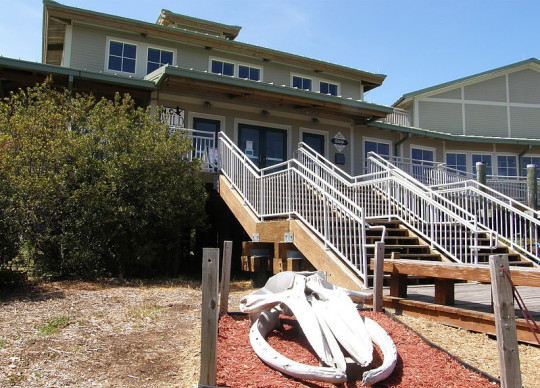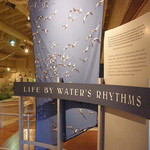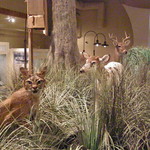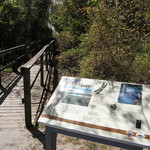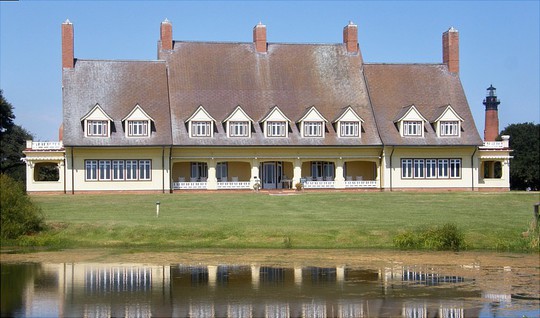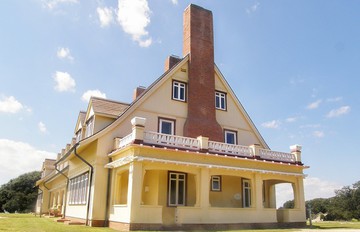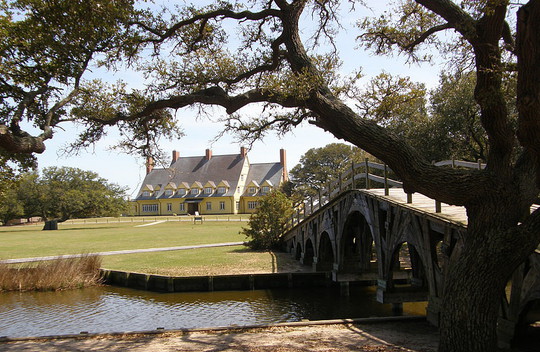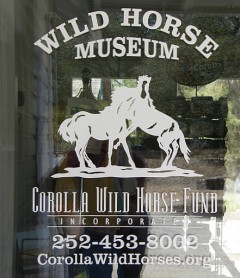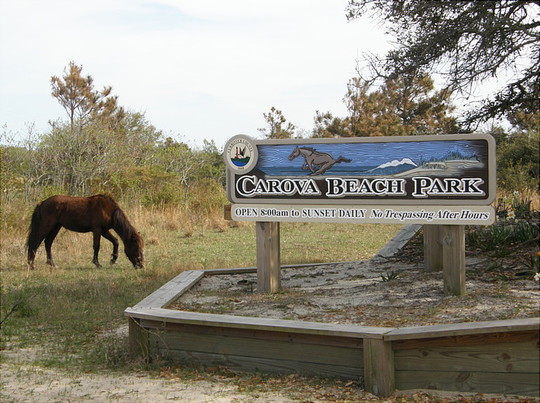CURRITUCK COUNTY
Scroll down this page or click on the specific site name to view features on the following Currituck County attractions/points of interest:
Currituck Beach Lighthouse, Historic Currituck Settlement, Mackay Island Wildlife Refuge, Outer Banks Center for Wildlife Education, Whalehead Club, Wild Horse Museum
Fast facts about Currituck County:
Created in 1668, the county’s name is derived from a Native American word meaning “land of the wild geese.”
The county seat is Currituck. Other communities include Coinjack, Corolla, Knotts Island, Sligo, and Tullis Creek.
Currituck County’s land area is 261.70 square miles; the population in the 2010 census was 23,547.
Below: The Currituck Beach Lighthouse, Corolla
Corolla
Currituck Beach Lighthouse, also known as the Corolla Lighthouse, is the northernmost beacon on North Carolina’s Outer Banks. The last of the lights to be built along the state’s barrier islands, Corolla’s tower first flashed its powerful light in 1875. Unlike her sister light-houses to the south – Bodie, Hatteras, and Lookout – the Currituck beacon remains un-painted, retaining its natural red brick appearance. The 158-foot lighthouse is open for climbing, weather permitting, from mid-spring to late autumn. Easily seen from the balcony are the Whalehead Club, the Outer Banks Center for Wildlife Education, and Currituck Sound. The lightkeeper’s house is closed to the public, but a smaller keeper’s dwelling has been restored and now serves as the gift shop, well-stocked with books and charming keepsakes. Currituck lighthouse is open for climbing 9-5 daily, March 23 through November 23. Admission charged. 252-453-4939
Currituck
Historic Currituck Settlement includes the Currituck County Courthouse and the Jacobean Jail. The latter, built in 1790, is the oldest standing jail in North Carolina. The courthouse site was used as a Confederate recruiting center and is one of the stops on the North Carolina Civil War Trails system. The ferry crossing Currituck Sound for Knotts Island runs from this location multiple times daily.
Northeast Currituck County
Mackay Island National Wildlife Refuge, located in the northeast corner of North Carolina, easily qualifies as one of the most remote sections of the state. Just getting to this wildlife wonderland is a minor adventure – unless you want to swing down through Virginia, your only way of getting to the island refuge is by taking the free ferry from Currituck to Knotts Island. Once on Knotts Island, take NC 615 north through the refuge. The refuge office is eight miles, only one mile south of the Virginia state line. Established in 1960, the refuge covers a little more than 8,000 acres of marshland in the northeast portion of Currituck Sound. Located along the Atlantic Flyway, this protected area has provided safe haven for more than 50 years for shorebirds, snow and Canada geese, wading birds, ducks, and raptors. Among the latter are such endangered and threatened species as the American bald eagle and the peregrine falcon. Although the refuge draws about 75,000 visitors annually, the site has succeeded in maintaining a habitat that shelters its diverse population, and the sense one usually has when visiting is of quiet solitude.
The Mackay Island Refuge is one of an even dozen sites listed on the Charles Kuralt Trail, named for the famed broadcast journalist who delighted in sharing the wonders of such remote and relatively-unknown places with his viewers. The “trail” is not so much a route to be followed as it is a listing of places to visit – all but one located in North Carolina – that share common goals with regard to restoring and preserving natural habitats. Other stops along the trail include Mattamuskeet, Alligator River, Great Dismal Swamp, and Pea Island refuges. The Visitor Contact Station at the northwestern corner of the Mackay Island Refuge provides interpretive displays and literature, as does the red-roofed kiosk at the Kuralt Trail Overlook along highway 615. An elevated platform at this spot affords visitors a scenic view of the Great Marsh, which covers about seventy-five percent of the total refuge area. During fall and winter, the marsh is an excellent location for viewing large concentrations of snow geese, tundra swans, and a variety of ducks. The Mackay Island Trail, covering 2.9 miles, and the Live Oak Point Trail, covering 5.5 miles, offer additional opportunities to see wildlife. There is a handicapped-accessible fishing pier at the East Pool impoundment, and a small boat ramp is located near the dike gate on Mackay Island Road. The refuge is open daylight hours seven days a week; the visitor contact station is open 7:30-4:00 M-F. The Currituck-Knotts Island ferry makes several crossings daily, beginning at 6 AM.
Corolla
The Outer Banks Center for Wildlife Education occupies an enviable spot in Currituck Heritage Park, between two of the northern Outer Banks’ most popular tourist attractions: Currituck Beach Lighthouse and the Whalehead Club. The educational facility’s theme of “Life by Water’s Rhythms” is developed by means of an 8,000-gallon aquarium stocked with fish species found in Currituck Sound; an impressive collection of waterfowl decoys; hunting and fishing artifacts conveying the natural and cultural history of the area; and a “Wildlife of the Marsh” diorama. The Center’s feature film examines the importance of the water to the history of the region; other video presentations are offered regularly. The Center also hosts a wide variety of public programs. A boardwalk leads to an overlook of Currituck Sound. The Center is open 9-5 Monday-Saturday. Admission is free. 252-453-0221
Corolla
The Whalehead Club, as it is now known, was built during the years 1922-1925 by northern industrialist Edward Collings Knight, Jr. The imposing 21,000 square foot structure was intended to be a seasonal home where Knight and his wife could indulge their passion for waterfowl hunting. The former private residence now offers visitors a fascinating glimpse of what life was like in the days before condominiums and cottages crowded North Carolina’s remote barrier islands. Built at a cost of $383,000, the canary-yellow mansion is a curious fusion of Art Nouveau and French country. The building is long and narrow to take full advantage of its location along the Currituck Sound – the parlor and dining rooms, on opposite sides along the front of the house, have large windows affording marvelous views of the water. The recessed porch likewise provides a relaxing view of the sound. The steeply pitched roof, replaced in 1999, is made of copper shingles; within a few years the roof’s patina will return to the beautiful green color seen on the house when the Knights originally lived there. Five brick chimneys and nine gabled windows on both the north and south sides of the house punctuate the roofline. An interesting “kissing swan” frieze also accents the exterior of the lodge.
Visitors will find the rooms to be very spacious, es-pecially with little furniture on hand to fill up space. Ray T. Adams bought the prop-erty from the Knights’ heirs in 1940 for $25,000, at which time he renamed it Whalehead Club. In later years, the property served as a Coast Guard facility, a school, and even as a rocket test site. Not surprisingly, therefore, very few Knight family possessions are on display in the house, and many rooms have an empty feel to them. Tour guides focus largely on the home’s architectural and decorative styles, such as the corduroy paneling and the abundance of carved mahogany used in the downstairs area and the water lily motif prominent in the dining room. Upstairs, the separate bedchambers and bathrooms of Mr. and Mrs. Knight are amazingly large. The bathrooms are so big, in fact, that they easily fit tour groups of 12 to 14 adults. Guest bedrooms are only slightly smaller and likewise adjoin private baths. Visitors also get a look at the domestic side of things, seeing servants’ quarters, workstations, the butler’s pantry, the kitchen, even the Otis elevator that once raised heavy trunks to the second floor. Exhibits housed in the basement focus on the region’s hunting and fishing heritage. The Whalehead Club offers tours daily 10-5 from April-December. Admission charged. Special “Behind the Scenes” and group tours are available with reservations. 252-453-9040
Corolla
The Wild Horse Museum in Corolla is less a traditional museum than a cozy meeting place where visitors can learn about the beloved Spanish Mustangs of the Outer Banks. Operated by the non-profit Corolla Wild Horse Fund, the museum occupies one of the small buildings in the charming Old Corolla Village. Open year-round, the facility features a wall-sized aerial map of the area where the horses roam, video displays, and plenty of beautiful photographs of the horses. The museum’s best feature is the friendly, knowledgeable staff of volunteers who are always eager to answer questions visitors might have about the horses, including tips on how best to see them. Several companies conduct off-road "treks" to areas where the wild horses are often found grazing. During summer months, the museum offers such children’s activities as painting small wooden horses, giving rides on a gentled mustang, and live mustang visits. Admission to the museum is free; nominal fees apply to children’s activities. Gift shop sales help fund the organization’s efforts to preserve and protect the wild horse herd, which numbers about 120. 252-453-8002
Currituck County is bordered by CAMDEN and DARE counties.
Return to REGION ONE HOME PAGE.
Return to GEOGRAPHIC REGIONS HOME PAGE.

